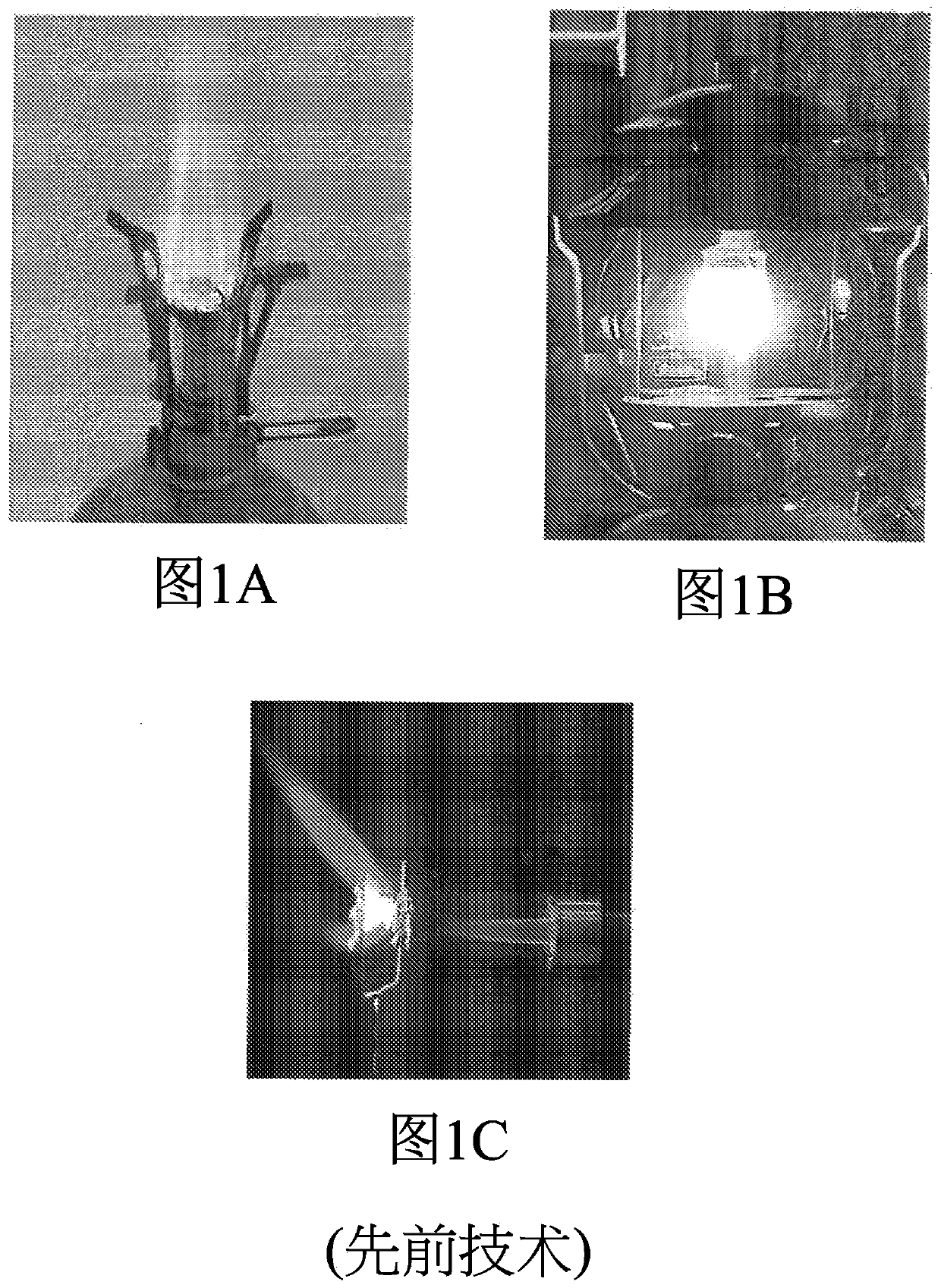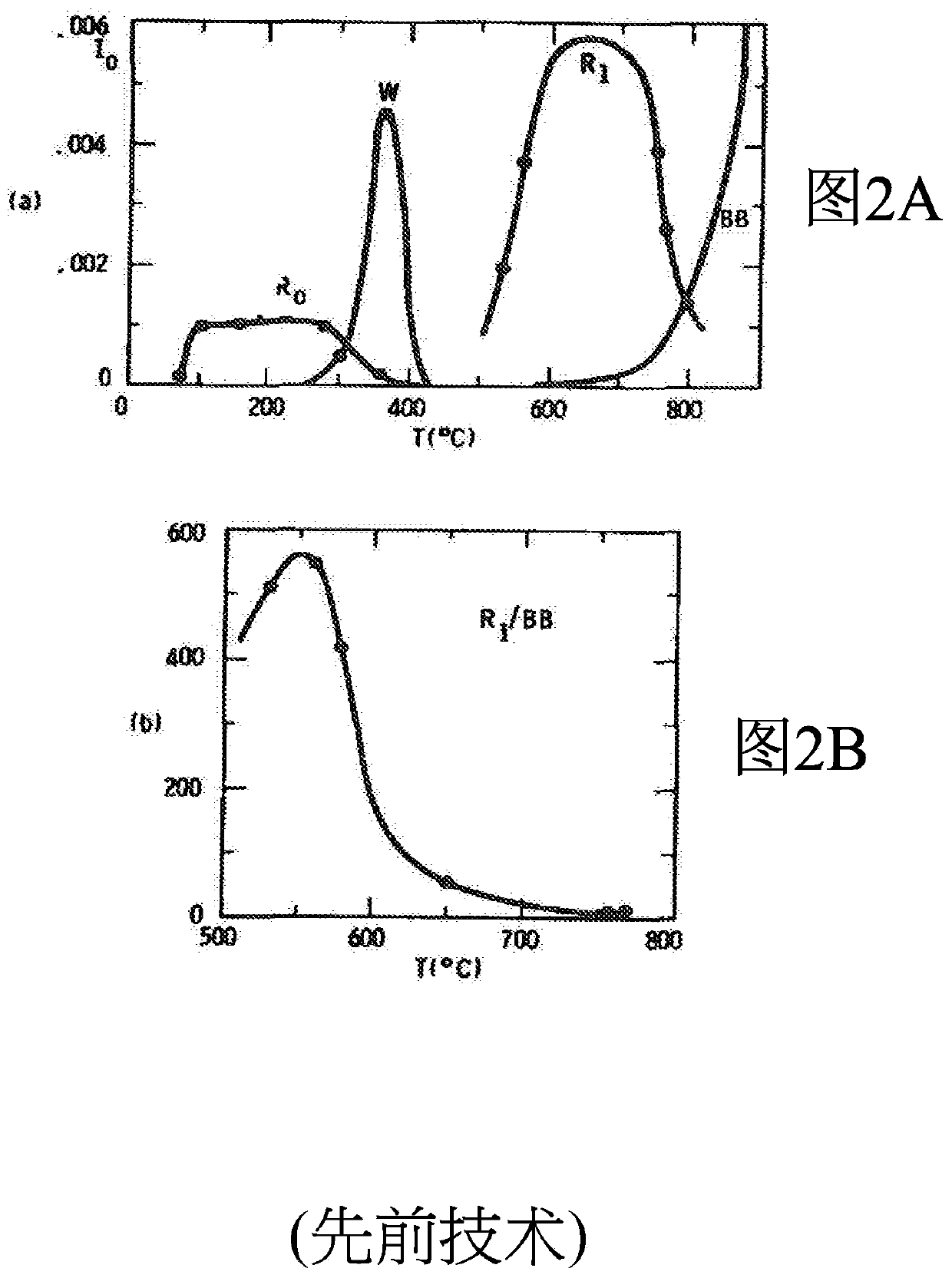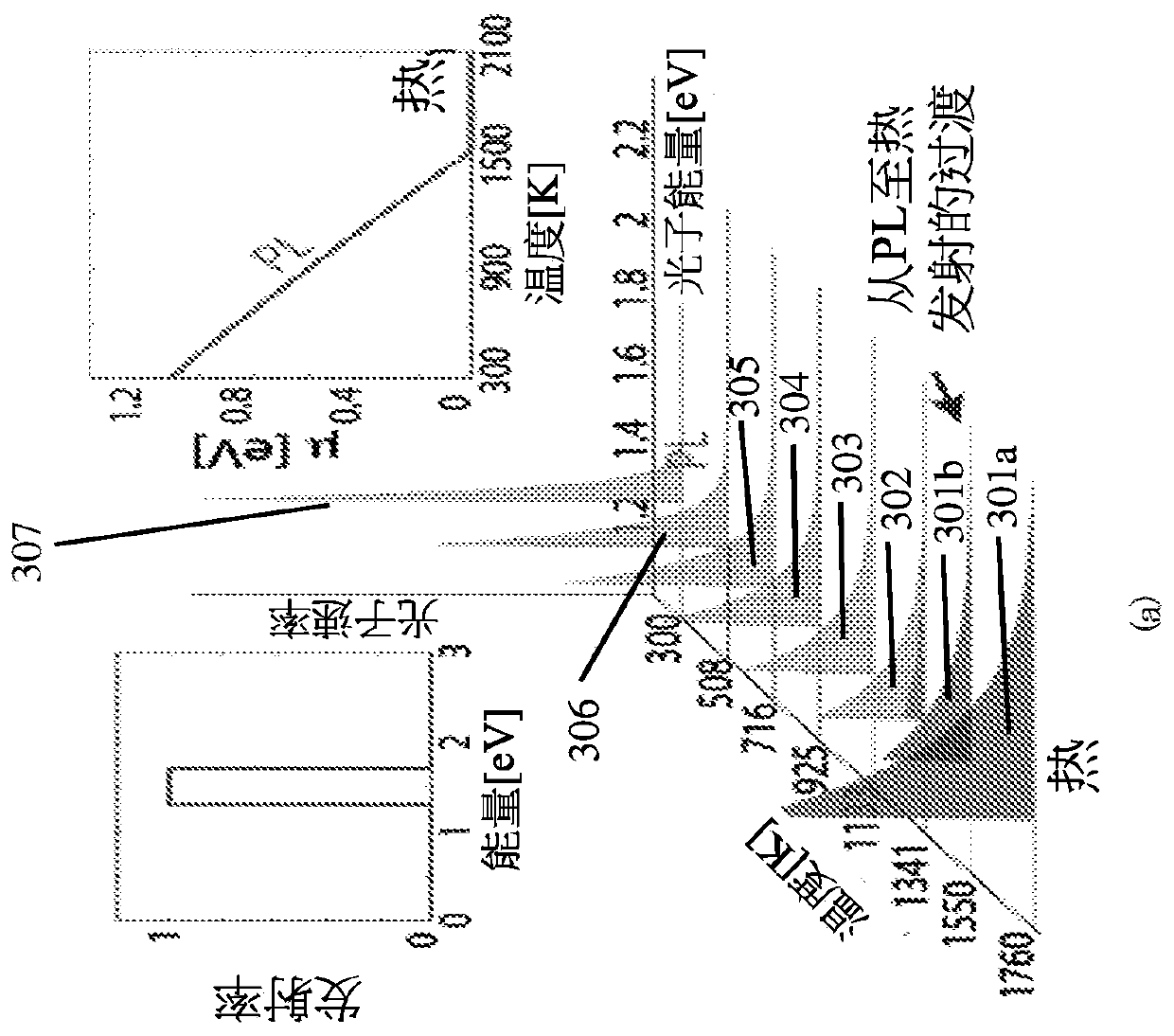Non-thermal candoluminescence for generating electricity
A photoluminescent material and electric energy technology, applied in photovoltaic power generation, luminescent materials, photovoltaic modules, etc., can solve problems such as heat loss without consideration
- Summary
- Abstract
- Description
- Claims
- Application Information
AI Technical Summary
Problems solved by technology
Method used
Image
Examples
Embodiment Construction
[0053] foreword
[0054] The inventors found that, in contrast to thermal emission, the rate of non-thermal radiation (NTR) is conserved with increasing temperature, while each photon is blueshifted. As used herein, "blue shift" is any decrease in wavelength and corresponding increase in frequency of an electromagnetic wave. A further increase in temperature results in an abrupt transition to thermal emission, where the photon rate increases dramatically.
[0055] The underlying physics governing the interaction between NTR and thermal emission is expressed by the generalized Planck's law via Equation 1 (Eq. 1), as follows:
[0056]
[0057] where R is the emitted photon flux (number of photons per second per unit area). Here, T is the temperature, ε is the emissivity, is the photon energy, K b is Boltzmann's constant and μ is the chemical potential. The corresponding emission energy rate is given by definition. The chemical potential μ > 0 defines a temperature ...
PUM
 Login to View More
Login to View More Abstract
Description
Claims
Application Information
 Login to View More
Login to View More - R&D
- Intellectual Property
- Life Sciences
- Materials
- Tech Scout
- Unparalleled Data Quality
- Higher Quality Content
- 60% Fewer Hallucinations
Browse by: Latest US Patents, China's latest patents, Technical Efficacy Thesaurus, Application Domain, Technology Topic, Popular Technical Reports.
© 2025 PatSnap. All rights reserved.Legal|Privacy policy|Modern Slavery Act Transparency Statement|Sitemap|About US| Contact US: help@patsnap.com



